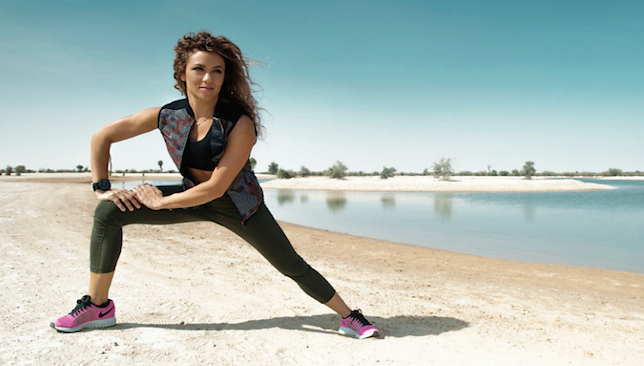
On the eve of Nike’s We Run DXB, we hear from Dubai-based Heba Abdel Gawad – an Egyptian two-time Olympian, Neural Performance Specialist, Z-Health Master Trainer and NeuroPilates Instructor and Instructor Trainer – about her quest to find out how much of running is mental compared to the physical aspect of it.
When I was asked to do the Nike 10k run my initial response was an immediate ‘no, I’m not a runner’. As a former Olympic synchronised swimmer, I spent my whole life training in the water and I did not feel I had the stamina, endurance or motivation to be able to do it.
– Russia: Scandal exposes security agency’s links to sport
– #360view: IAAF incompetence stinks
A few weeks later I started reading a book called ‘Brain Training for Runners’ by Matt Fitzgerald where he continuously emphasises to ‘train the brain, and the rest will follow’ and that the brain can be trained to allow the body to physically handle more.
We all know that when it comes to performance that it is the brain that runs the show and it is something my husband and I teach at our workshops all the time, so I thought I would sign up for the Nike run and use it as an experiment to see if running truly is 90 per cent mental as many sports scientists believe.
So in preparation for this run I have done no running training at all but instead focused on breathing exercises, knee stability exercises and mental visualisations.
I have been using the ‘Expand a Lung’ breathing device which strengthens your lungs and co-ordinates your breathing muscles, holding isometric split squats for five minutes on each leg for knee stability and strengthening. I have also been reading about mental visualisations to do during the run to distract the brain from the body’s fatigue.
One of the visualisations from Fitzgerald’s book is to focus on “pulling the road”. You have to imagine that your running route is like a giant nonmotorised treadmill. On a non-motorised treadmill, you are able to run in place by pulling the treadmill belt backward with your feet.
Envision yourself doing the same thing with the road as you run outdoors. You’re not actually moving forward – you’re simulating forward movement by pulling the road behind you with each foot. This visual will teach you to begin generating thrust earlier, to stiffen your stride and to minimise ground contact time.
Another visualisation is to imagine you’re running on water, and your goal is not to fall through. To do this, you must overcome the squishiness of your running surface by applying maximum force to the water in minimum contact time, like a skipping stone.
You have to try to make your feet skip across your running surface in a similar way: quickly, lightly, yet forcefully. This proprioceptive cue (unconscious perception of movement and spatial orientation) will teach you to stiffen your stride, minimise ground contact time, and begin the thrust phase earlier.
I expect it will be a tough fatiguing experience but I feel confident in the fact that it is my brain that regulates my body and not the other way around. Most of us like to label ourselves as very specific types of athletes and I always thought I was only ever athletic in the water.
This run will push me outside of my comfort zone and challenge my brain and body in a very different way. It is said that even when we think we are at our maximum fatigue point in any endurance sport, we’re only using about 40 per cent of our capability and effort.
I believe that we are all a lot stronger than we think, and our bodies can go beyond our perceptions of tiredness and limits.